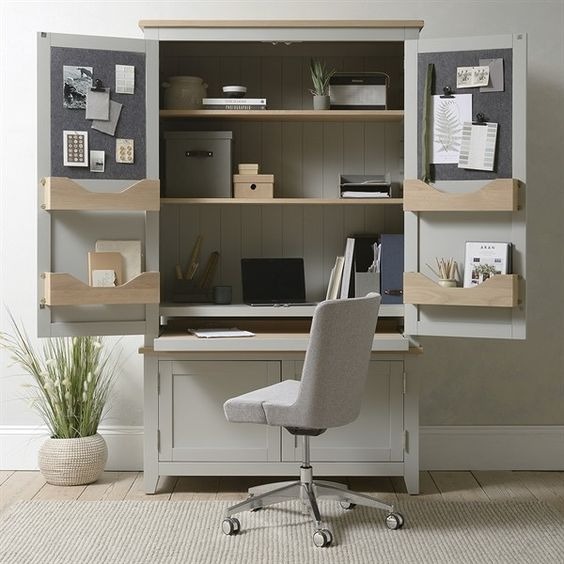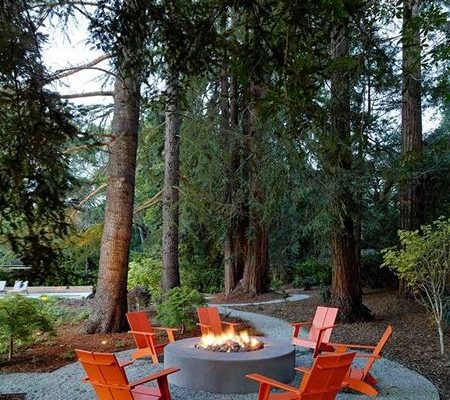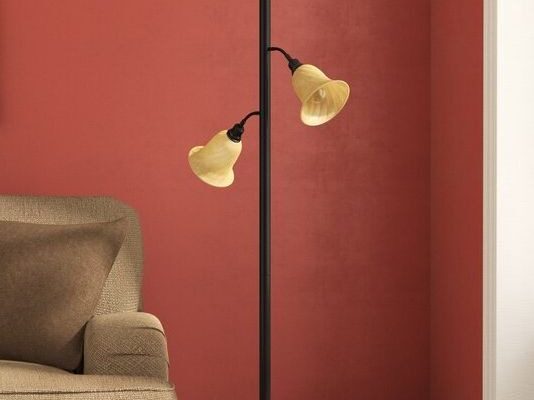Creative Home Office Ideas for Productivity
Nowadays, a lot of individuals are working and conducting Zoom meetings from home, and this trend doesn’t seem to be ending anytime soon. Designing a functional home office with comfort can have a significant impact on productivity and help you stay focused while working from home.
If you’re one of these people who have been managing work from a dreary corner of your basement, with your laptop placed on some storage bins and a cushion to support your backside, it’s high time to take the initiative and create a functional and well-organized workspace in your home.
You’re not alone in this predicament as many others are facing similar challenges without a dedicated workspace at home. Nevertheless, even if you have to designate a tiny area in your bedroom or an unused space at the top of a stairwell, it’s crucial to set it up for a more productive work-from-home season.
An organized desk space is not only aesthetically pleasing (although that is essential for a serene work environment) but also improves efficiency, comfort, and functionality. It should allow you to complete tasks with ease, access essential tools quickly, and avoid experiencing back pains by the end of the day.
Having a designated workspace in your home allows you to eliminate domestic interruptions and concentrate on your work. If your desk area requires an overhaul, or you desire a more comfortable and attractive workspace, below are some ideas that you can implement in a weekend.
In this article, we have curated thirteen home office concepts that will motivate you to create a conducive environment for work in your own home.
Work Space with a Minimalist Design
The home office encompasses an entire wall of a bedroom and is adorned with a minimalist aesthetic similar to the rest of the residence, which predominantly features a white color scheme with well-placed pops of color. The application of color is strategically positioned to create an impression of spaciousness, with elements of color dispersed throughout the apartment.
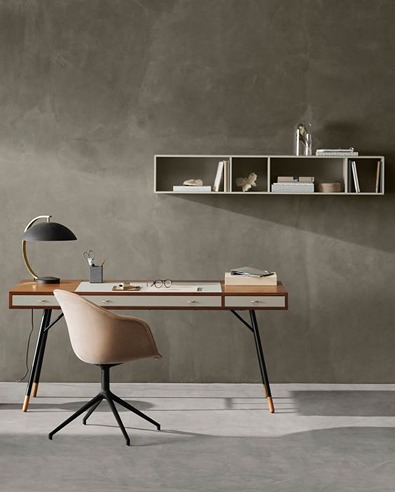
Define the space with paneling
Consider giving your home office area in an open plan space a distinct look by revamping a section of the wall. Add visual appeal and demarcate the area by creating a paneled section on the wall.
For added style, paint this section in a different color than the rest of the wall space. You could also paint the desk shelf in the same color to create a cohesive look. After removing your work essentials, the shelf could serve as a trendy display area or even a home bar.
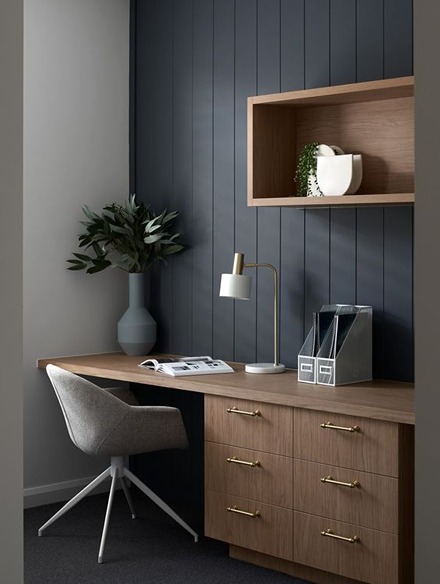
Space-Saving Table
The drop-front desk is a space-saving solution that also accentuates the sculptural accessories. Additionally, the versatile poof serves multiple purposes, functioning as a bookshelf, footstool, and an additional seat for a study companion.
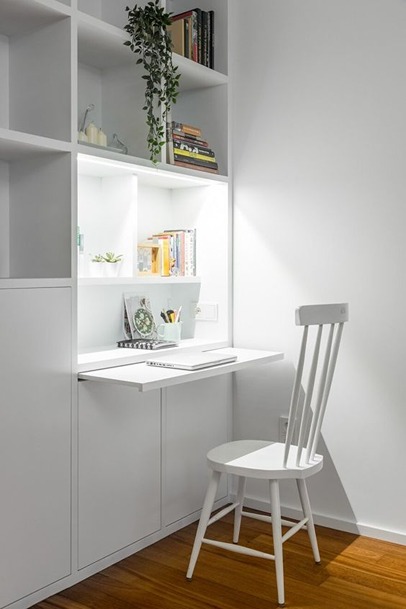
Natural Light and Bright Scheme
With ample natural light pouring into the corner unit, this luminous home office is an excellent space for ideation and innovation. The objective is to leverage the abundance of natural light available in the room.
To maximize the perceived size of your workspace, color is a crucial consideration whether you’re utilizing a small box room or a portion of a larger area. Light, airy hues and materials create an illusion of spaciousness. Consider crisp whites, pale woods, and sparkling metallics.
Strategic placement of your desk is important to optimize natural light in the area. Proper lighting can enhance productivity and minimize exhaustion. Take advantage of natural light, but position your desk perpendicular to a window to avoid direct sunlight on your computer screen. Use tall lamps to illuminate specific areas where you need to focus on details.
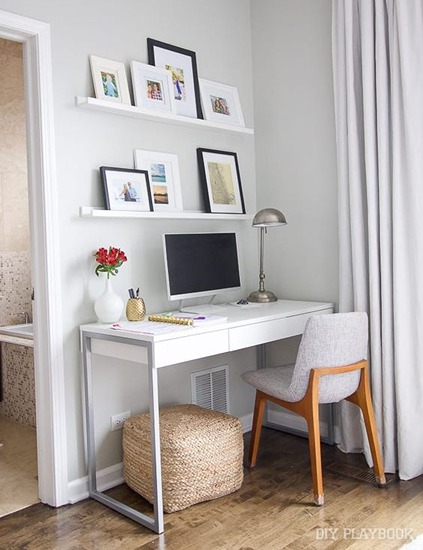
Utilize wall mounted lights to create a desk space
When creating a home office, lighting plays a vital role, even in a limited space. Along with overhead lighting, incorporating task lighting above the desk area is crucial. Desk lamps are an excellent option, but if you have limited desk space, you can opt for a wall-mounted spotlight instead.
With plug-in wall-mounted lights, you can install them effortlessly without any need for rewiring. Table and desk lamps are essential for creating a cozy ambiance and can be strategically positioned behind monitors to minimize surface clutter. Alternatively, they can be placed on a nearby shelf to cast a warm glow across the room.
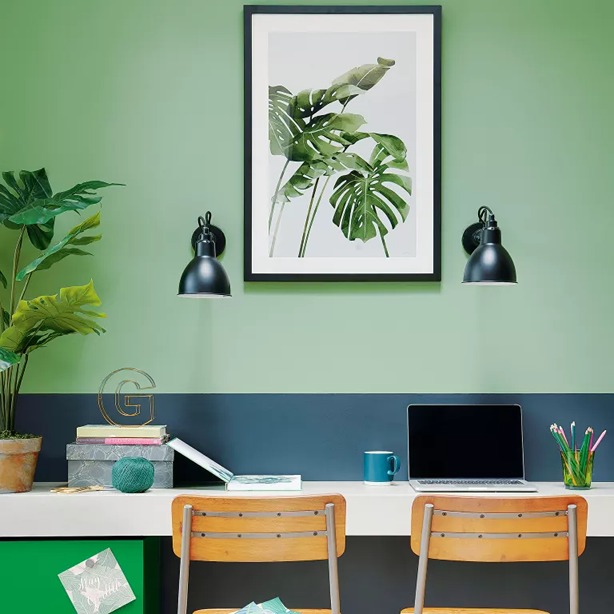
Declutter using hanging pots
When dealing with a limited desk space, such as a cloffice or a corner of another room, the wall area should be utilized to the fullest. It is essential to avoid bulky shelves that obstruct headroom and impede light from reaching the desk.
A practical alternative is to attach storage solutions like pots for stationary and a picture rail for books directly onto the wall. This will provide an organized workspace without encroaching on valuable floor space.
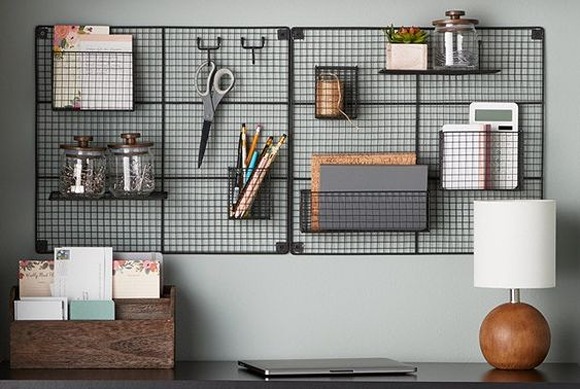
Add stress-reducing greenery
Incorporating houseplants into a small home office can bring a refreshing touch and boost productivity. As advised by Lauren at Furniture Village, adding a selection of houseplants, whether real or artificial, can help reduce work-related anxiety and promote clarity.
To prevent plants from taking up too much space on a small desk, hanging planters are a practical solution. Although real plants provide the best aesthetic, if maintaining them is a challenge, it’s worth considering artificial plants, which have been proven to offer similar stress-relieving benefits without the worry of water damage to the workspace.

Consider vertical storage
When it comes to small offices, utilizing every available inch of space is crucial, including the area above the desk near the ceiling. To make the most of this vertical space, transform it into a storage shelf with labeled boxes.
Although it may be difficult to access without a step ladder, it is ideal for storing items such as family records and memory boxes that don’t need to be used on a daily basis but must be easily accessible.

Create a wardrobe nook
When incorporating a home office into a bedroom, you may need to give up some wardrobe storage to create a workspace. A nook can be made with just a couple of feet of space for a small desk.
Opt for a slim desk to minimize the impact on the room, and position it in a way that it does not interfere with the wardrobe doors. You can use the wardrobe sections above head height for storage. It is important to leave enough space for a comfortable and practical distance between the desk and the light source.
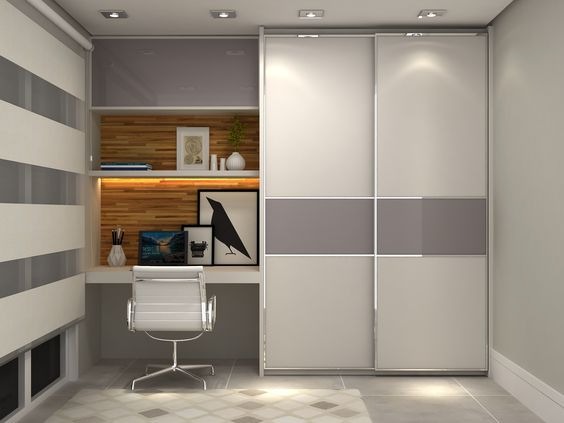
Formulate a flexible workstation
To make a living room into a functional workspace, it’s important to consider the elements that can easily transition from a work setting to a comfortable living space. One solution is to transform an alcove in the living room into a workstation by adding a built-in computer table that can be pulled out to expand the desk size.
For seating, a folding chair is a practical option that can be easily stored away under a sofa or bed or hung on the back of a door when not in use. This setup allows for a comfortable work area during the day and a seamlessly integrated living space in the evening.

Take advantage of under stair space
Instead of letting the space under the stairs become a cluttered storage area, transform it into a stylish home office. Avoid making design mistakes by going for a bespoke design that allows you to maximize the available space with customized cabinetry.
Incorporate as much storage as possible, including space for coats and miscellaneous items, in addition to office supplies. A pull-out drawer could also be a useful addition.
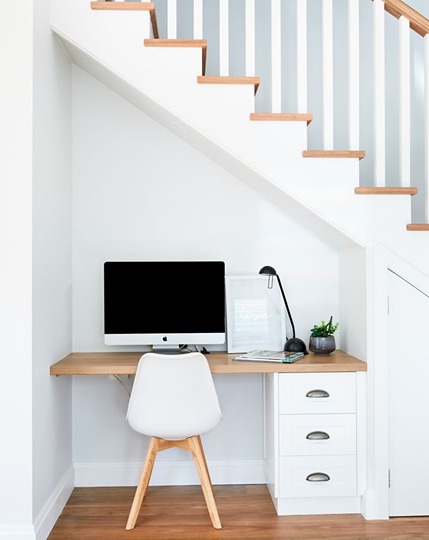
Choose a corner desk
When it comes to setting up a home office, don’t underestimate the potential of a corner space. A corner desk can be a smart choice for maximizing both work surface and storage while minimizing the impact on the rest of the room.
Remember to prioritize ergonomics and look for a desk with a pull-out keyboard tray to maintain a comfortable typing position at a safe distance from the screen.
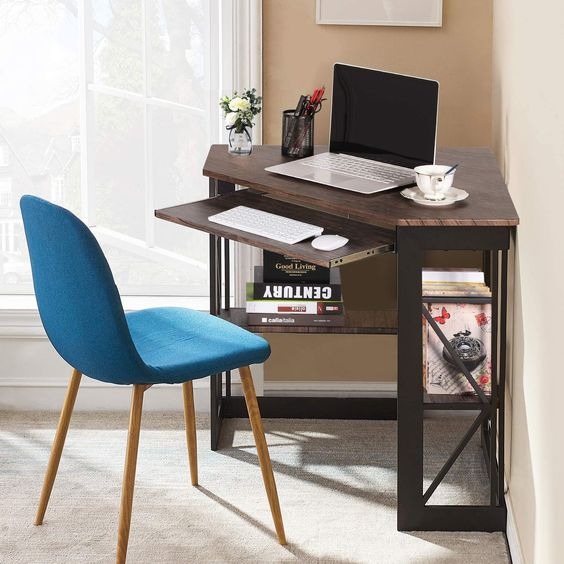
Transform a cupboard into a hidden home office
To maintain a healthy work-life balance, having the ability to physically separate your home office from your living space is crucial. This is especially important in small homes, where the presence of a screen or computer can be overwhelming.
Repurposing an old cupboard into a home office is an excellent solution. Include a shelf for storage and a keyboard tray on runners. Attach pin boards to the inside of the cupboard doors as a place to keep track of important notes, tickets, and postcards. When not in use, simply close the doors and your workspace is out of sight and out of mind.
